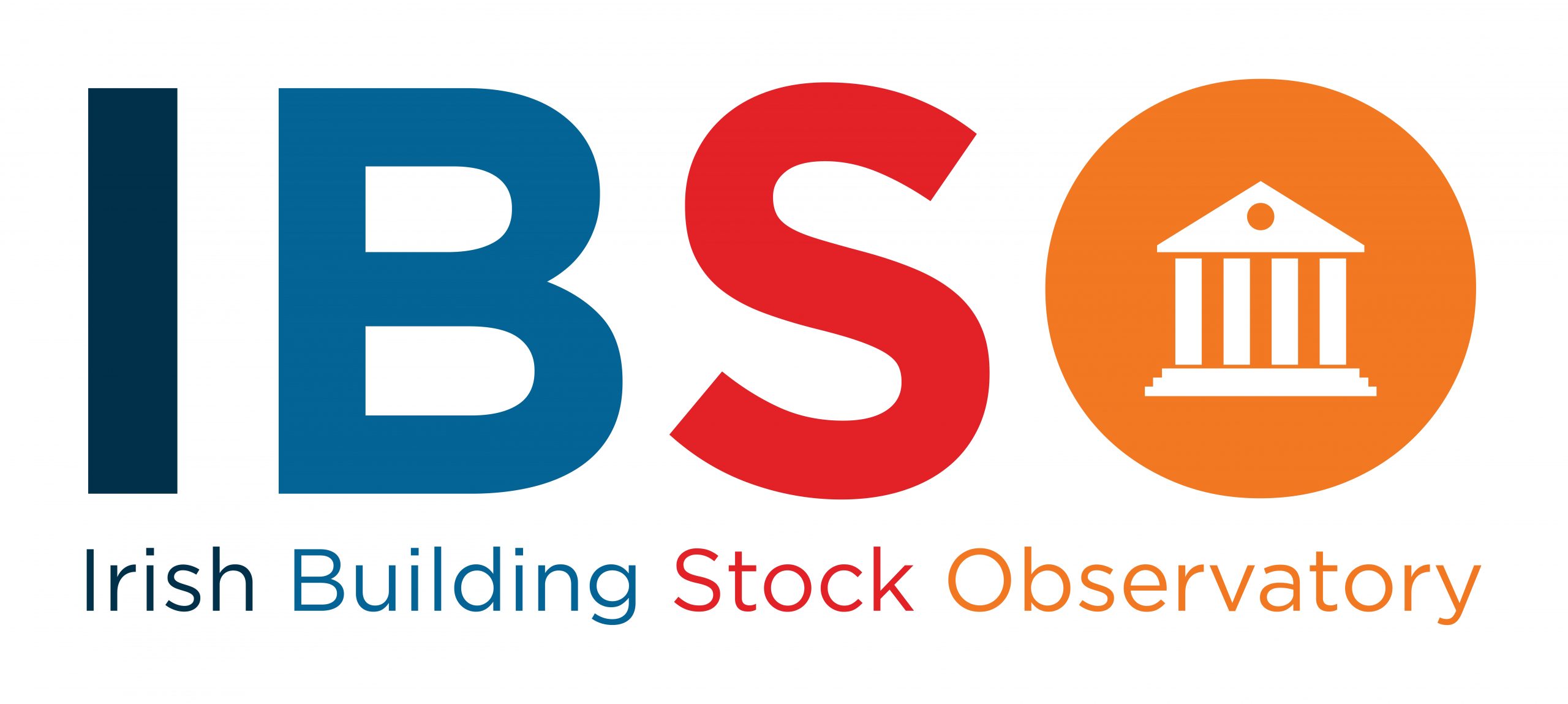
Irish Building Stock Observatory

- Title:
-
Irish Building Stock Observatory
- Start Date:
-
2021
- Research Partners
-
UCD, UCC, NUIG, Ulster University, The Information Lab, Codema, SEAI, MTU, TU Dublin
Introduction
The Irish Building Stock Observatory was established and resourced by MaREI, the SFI Centre for Energy Climate and Marine, to provide a better understanding of the energy performance of the building sector through reliable, consistent and comparable data and to share knowledge between those engaged in buildings and energy research. Focusing on the challenges of decarbonising the built environment, the observatory is formed via a network of relevant actors who share data, ideas, problems and solutions that aim to inform and support delivery of climate and energy policy in Ireland. MaREI has proactively engaged with building energy modelling researchers and analysts in academia and policy organisations across the island of Ireland to create a network of organisations engaged in building and energy research, as shown.
Context
Historically, building stock energy consumption models were informed by poor or outdated information attributed to [1-4]; i) paucity of observed data, ii) a lack of documented transparency around energy performance model inputs, iii) a lack of prioritisation of the topic for research investment, and iv) low influence of research on policy leading to regulations. In recent years there has been a surge in the development and use of energy consumption and building performance simulation models for depicting building stocks usually based on EPC data [2, 5], this has been driven by policy [6] that seeks to reduce energy use to; a) lower greenhouse gas emissions, b) reduce dependence on imported fuels, c) reduce the cost of energy, and d) contribute to quality of life and wellbeing, in particular alleviating fuel poverty and reducing exposure to poor indoor environmental quality.
Effective policy and decision making starts with accurate information [7, 8]. Energy Performance Certificates (EPCs) are the foremost source of information on the energy performance of the EU’s building stock [9, 10] and are a crucial instrument for benchmarking and formulating policy goals [11]. However, concerns have been raised as to the quality of the data [12-19]. More transparent and robust information on buildings can support monitoring the implementation of different measures and contribute to future policy making. The data published in the iBSO can therefore be very useful to policy-makers, investors, stakeholders, local and national authorities and researchers and ultimately the wider public.
Governance
The network supporting the observatory has grown purposefully to include 10 institutions or organisation across the island of Ireland, namely, University College Cork, Technological University Dublin, Ulster University, Munster Technological University, NUI Galway, University College Dublin, Codema, The Information Lab, the Sustainable Energy Authority of Ireland and the Irish Green Building Council and is open to new members.
Governance of the observatory is through inter-institutional coordination, facilitated by MaREI, acting as lead organisation. Engagement is facilitated through monthly meetings characterised by a structured presentation detailing ongoing work by a network organisation followed by informal discussions among members. This format has facilitated a flow of both formal and informal knowledge amongst institutions (inside and outside of MaREI). Meetings are chaired and recorded by the network chair and secretary respectfully. It is envisaged that the chair of the observatory will rotate through MaREI network organisations every 2/3 years.
As such, the observatory is primarily participant governed (shared governance) wherein every organisation interacts with every other participant organisation to make operational decisions about how the observatory operates, in this vein, there is no unique, formal governance structure other than the collaborative interactions among the members; while issues that are central to the maintenance of the observatory such as funding etc. occurs through MaREI – acting as host organisation.
Outputs to Date
In June 2021 a survey of network members was undertaken. It is felt by members that the network has the potential to connect researchers and their datasets/tools and capabilities in a way that consolidates efforts and is also a very useful information exchange platform. The engagement has resulted in the development of a mutually agreed set of data filters to be applied to Ireland’s EPC dataset to remove erroneous data making it more representative. Standardising data processing will enable faster research outputs and cross-validation of models; while consolidating information and common issues allows SEAI to improve input parameters leading to a more robust dataset to accurately inform policy. To facilitate sharing of information and data, network members have contributed to an open-source “repository” of data, available here. Compiling data relevant to modellers in one location enables faster knowledge sharing and information gathering and hence faster research outputs.
Short-term outputs: Some of the short-term direct and indirect outputs of the network are outlined below:
Direct
- Democratising access to stock modelling data process tools via an open source tools section of the site. A pre-requisite for publishing tools on the website will be that the methods and protocols will have undergone a peer-review process and be prior published in an open-access journal such as Method X or similar and similarly that any resultant datasets in a Data in Brief paper or similar. The site will be managed by an appointed member of the observatory with publication requiring sign off by the chair.
- Journal article quantifying the impact of agreed filters on the EPC dataset – the methodology creates a standardized set of filters to be applied to the EPC dataset and also outlined how the application makes the database more representative.
- Journal article: “Determining realistic heat-loss coefficients for existing buildings; a case-study for predominating housing types in Ireland” – that addresses a generalisable methodology for dealing with the 30-35% of EPC data inputs characterised on pessimistic default heat-loss coefficients.
- Agree a visual interactive platform e.g. TABLEAU for representing building stock information such as inter alia EPC’s or fuel type by small area code.
- Student forum to present on work within-group and capture the added benefits of interaction amongst research students/ institutions.
Indirect
Network effect/Research cluster – collaboration among researchers generally increases productivity, generates higher impact work (Wutchy, Jones, & Uzzi, 2007), and results in the training of more collaborative researchers (Hampton & Parker, 2011), assisting MaREI in the training of the built environment leaders of tomorrow.
Long-term vision:
- Utilise the repository and online platform to provide a “real-time” stock model for the building sector which matches the pace of renovation and that can be used to both guide and evaluate progress towards delivering on 2030 retrofit targets – See beta version “Irish Building Stock Generator IBSG” here.
- Close the loop: Utilise journal articles and networks to provide feedback to EPC data processing -improving the robustness of this dataset.
- Further, develop the EPC filters to identify appropriate substitution of default values using alternative datasets and measured data and publish work and hence incorporate into the Irish Building Stock Generator.
- Upload datasets relevant to building energy stock modellings such as inter alia data on appliance use in buildings, heating and occupancy profiles.
- Organise sub-groups around application domains e.g. commercial, industrial and residential buildings, allowing focus groups to report back to the main group periodically.
- To explore how the network might support the industry (designers, modellers etc.) in using more accurate and reliable modelling tools/approaches to help reduce the performance gap (could be a subgroup).
- In order to calibrate and validate outputs from the models to link with CRU, ESB, and GNI to create a feedback loop of metered data to verify/improve accuracy, highlight trends, etc.
- To ascertain temperature data for buildings in order to measure the level of service as opposed to just the consumption.
- Link CENSUS data to building data.
Funding
To date the initiative has been supported on a volunteer basis by MaREI organisations UCC and TU Dublin. To advance the work of the observatory, it is envisaged that members will collaborate as a consortium to apply for research funding. In this vein, it would be helpful to have the network realised as an output from MaREI along with publications, methods, and datasets resulting from the engagement.
Reference
[1] Research and evidence needs for decarbonisation in the built environment: a UK case study, in, Routledge, 2012, pp. 432-445.
[2] A.J. Summerfield, R. Lowe, Challenges and future directions for energy and buildings research, Building Research & Information, 40 (4) (2012) 391-400.
[3] R. Lowe, T. Oreszczyn, Regulatory standards and barriers to improved performance for housing, Energy Policy, 36 (12) (2008) 4475-4481.
[4] I. Hamilton, T. Oreszczyn, A. Summerfield, P. Steadman, S. Elam, A. Smith, Co-benefits of Energy and Buildings Data: The Case For supporting Data Access to Achieve a Sustainable Built Environment, Procedia Engineering, 118 (2015) 958-968.
[5] É. Mata, A. Sasic Kalagasidis, F. Johnsson, Building-stock aggregation through archetype buildings: France, Germany, Spain and the UK, Building and Environment, 81 (2014) 270-282.
[6] NEEAP, Maximising Ireland’s Energy Efficiency, in: E.a.N.R.-T.N.E.E.P.-. Department of Communications (Ed.), 2009.
[7] M. Economidou, B. Atanasiu, C. Despret, J. Maio, I. Nolte, O. Rapf 2011, ‘Europe’s buildings under the microscope – A country-by-country review of the energy performance of buildings’, viewed Feb, 2015, <http://www.institutebe.com/InstituteBE/media/Library/Resources/Existing%20Building%20Retrofits/Europes-Buildings-Under-the-Microscope-BPIE.pdf>.
[8] L. Itard, H. Visscher 2014, TABULA EPISCOPE – NL The Netherlands – Country Page, Delft University of Technology, <http://www.episcope.eu/building-typology/country/nl/>.
[9] Y. Li, S. Kubicki, A. Guerriero, Y. Rezgui, Review of building energy performance certification schemes towards future improvement, Renewable and Sustainable Energy Reviews, 113 (2019) 109244.
[10] O. Pasichnyi, J. Wallin, F. Levihn, H. Shahrokni, O. Kordas, Energy performance certificates — New opportunities for data-enabled urban energy policy instruments?, Energy Policy, 127 (2019) 486-499.
[11] H. Visscher, F. Meijer, D. Majcen, L. Itard, Improved governance for energy efficiency in housing, Building Research & Information, 44 (5-6) (2016) 552-561.
[12] D. Majcen, L.C.M. Itard, H. Visscher, Theoretical vs. actual energy consumption of labelled dwellings in the Netherlands: Discrepancies and policy implications, Energy Policy, 54 (0) (2013) 125-136.
[13] L. Pérez-Lombard, J. Ortiz, R. González, I.R. Maestre, A review of benchmarking, rating and labelling concepts within the framework of building energy certification schemes, Energy and Buildings, 41 (3) (2009) 272-278.
[14] J.R. Stein, A. Meier, Accuracy of home energy rating systems, Energy, 25 (4) (2000) 339-354.
[15] Y.G. Yohanis, J.D. Mondol, A. Wright, B. Norton, Real-life energy use in the UK: How occupancy and dwelling characteristics affect domestic electricity use, Energy and Buildings, 40 (6) (2008) 1053-1059.
[16] J.L. Míguez, J. Porteiro, L.M. López-González, J.E. Vicuña, S. Murillo, J.C. Morán, E. Granada, Review of the energy rating of dwellings in the European Union as a mechanism for sustainable energy, Renewable and Sustainable Energy Reviews, 10 (1) (2006) 24-45.
[17] M. Sunikka-Blank, R. Galvin, Introducing the prebound effect: the gap between performance and actual energy consumption, Building Research & Information, 40 (3) (2012) 260-273.
[18] SEAI 2013, ‘Introduction to DEAP for professionals’, viewed Apr. 15, <http://www.seai.ie/Your_Building/BER/BER_Assessors/Technical/DEAP/Introduction_to_DEAP_for_Professionals.pdf>.
[19] D. Hull, B.P. Ó Gallachóir, N. Walker, Development of a modelling framework in response to new European energy-efficiency regulatory obligations: The Irish experience, Energy Policy, 37 (12) (2009) 5363-5375.
[20] O. Agbonaye, P. Keatley, Y. Huang, O.O. Ademulegun, N. Hewitt, Mapping demand flexibility: A spatio-temporal assessment of flexibility needs, opportunities and response potential, Applied Energy, 295 (2021) 117015.
Team Members Outside MaREI
|
Photo |
Name |
Position |
About |
 |
Usman Ali | Senior Researcher (UCD) | Usman’s primary research areas are machine learning, data mining, GIS modeling, intelligent computing, urban building energy modeling, energy performance certification and research software development. He joined UCD Energy Institute as a Senior Energy Systems Researcher (Data Science for Building) in 2022. He is working on a U.S.-Ireland R&D partnership project: intelligent data harvesting for multi-scale building stock classification and energy performance prediction. Usman’s has also worked as Senior Energy Policy Researcher in collaboration with the Sustainable Energy Authority of Ireland (SEAI) in 2021. He was involved in developing future proof energy performance certification and methodologies. Usman completed his Ph.D. ‘A data-driven GIS-based approach for multi-scale residential building energy modeling’ in 2020. |
 |
Philip Griffiths | Full-time Academic (Ulster University) | Professor of Building Physics, Course Director, Architectural Engineering and Energy programmes. Research in energy storage and thermal comfort. Uses experimental and computational tools for research. |
 |
Divyanshu Sood | PhD Student (UCD) | Divyanshu is PhD student in the School of Mechanical and Materials Engineering and UCD Energy Institute, University College Dublin, Ireland. Divyanshu is developing next Generation Building Archetypes within the project “ALIVE – Assessing Indoor Environmental Quality and Energy Efficiency In a range of Naturally-Ventilated Buildings.” The research focuses on the effect of natural ventilation on the building’s energy performance and indoor environmental quality (IEQ) in Irish buildings. I graduated from Chitkara University (India) in 2016 with a Bachelor in Engineering in Mechanical Engineering. I then continued my education and earned a Master of Technology degree in 2019 in Renewable Energy Engineering and Management from TERI School of Advanced Studies (India). I was awarded PAN India level GATE scholarship for the complete duration of his masters’ study. Divyanshu heads the UCD ASHRAE student branch and is a member of the International Building Performance Simulation Association (IBPSA) |
 |
Kevin Lynch | Industry Consultant (The Information Lab) | Kevin holds an MSc in Sustainable Development and is the Chief Technical Officer at The Information Lab Ireland, an industry-leading business intelligence solutions provider. Working primarily with senior executives across local and global organisations, the focus of Kevin’s data visualisation and analytic consulting experience is on helping his clients tell their stories through data to effect real impact and change. He regularly supports UN teams and local Irish NGOs in measuring and communicating their impact, and was a contributor to the Exponential Climate Action Roadmap. In partnership with Chartered Accountants Ireland, Kevin developed a curriculum for Data Analytics as part of the FAE syllabus. |
 |
John O’ Shea | Energy Systems Analyst / Heat & Electricity Lead (Codema) | John specialises in district energy, energy master-planning and policy development. |
 |
James O’Donnell | Full Time Academic (UCD) | Associate Professor James O’Donnell joined University College Dublin (UCD) in June 2013. Prior to this appointment, he worked as a senior Scientific Engineering Associate in the Building Technology and Urban Systems Department of the Lawrence Berkeley National Laboratory (LBNL). His current work focuses on the development and deployment of interoperable and BIM based solutions to support multi-scale energy modelling, from individual buildings to national building stocks. It is in this capacity that he contributes to buildingSMART’s Building Energy Modelling IDM Expert Panel. In addition to technical research and consulting, James teaches modules focusing on building physics and building energy modelling. Previously, he taught courses at Stanford University, National University of Ireland Galway, and University College Cork on building performance analysis, building physics and HVAC analysis respectively. He also worked as a Postdoctoral Scholar at the National University of Ireland Galway (NUIG). James has a degree in Civil and Environmental Engineering and a Ph.D. in holistic building performance analysis from University College Cork (UCC). He is also an editorial board member for the Elsevier journal Advanced Engineering Informatics. |
 |
Maria Galavan | State Agency (SEAI) | Maria Galavan is a qualified actuary with over 12 years’ experience in the life assurance industry in Ireland. Maria joined the Sustainable Energy Authority of Ireland (SEAI) in 2018 and currently works as a Senior Energy Modelling Specialist within the Data & Insights Department. Her focus is on modelling the impacts of energy efficiency policy on Ireland’s energy demand, including cost-benefit analysis of policy options. She is involved in preparing the annual National Energy Projections and was part of the team that produced Ireland’s National Heat Study, which assessed the options available to decarbonise the energy used for heating and cooling homes, business and industry. |
 |
Ciarán Murphy | Industry Consultant (Codema) | Ciarán’s role in Codema is coordinating the research, development and innovation area of Codema, alongside policy analysis. Prior to working for Codema, Ciarán worked for SEAI via a research fellowship collaboration with UCD Energy Institute. As project secretariat for the SEAI National Heat Study, he played a coordination and leadership role on the project, which explored in detail various pathways to net zero greenhouse gas emissions by 2050 in Ireland’s heat sector. Prior to that Ciarán spent five years working for ESB Networks, where he had various roles, including modelling renewable generator connections to the distribution grid, local network design, coordinating project scope and business requirements across multiple teams in the smart metering project, and facilitating the design of new ways of working for smart metering as the project entered its delivery phase. His time in ESB also included a secondment to ESB Innovation where he took part in a four month business innovation incubator programme in collaboration with Dogpatch Labs. |








